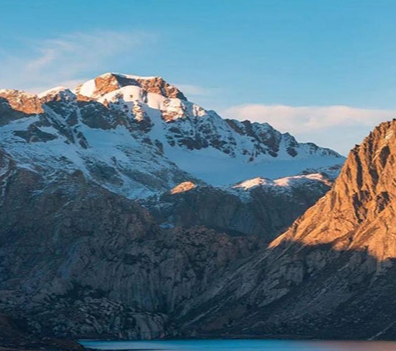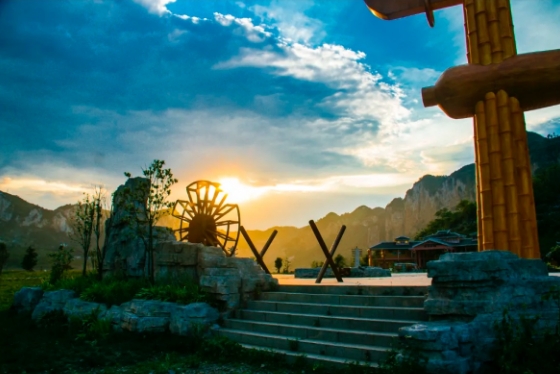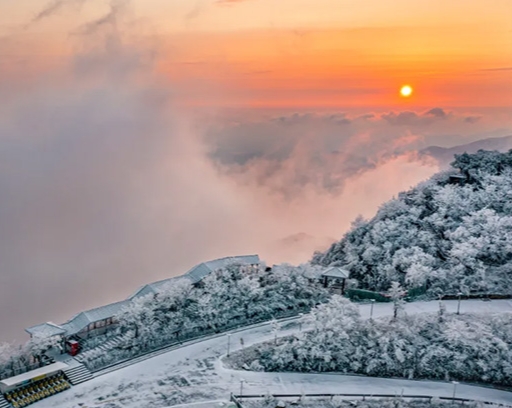It can get very hot in Sichuan, but then again there are some very pleasant places where you can find respite, Huang Zhiling reports.
At this time of the year in Sichuan, with temperatures as high as 38 C, the province's celebrated karst caves can be a cool place to hang out, the temperature in those of Tongjiang county hovering around a pleasant 18 C.
Mountainous Tongjiang, located where Sichuan, on the south, and Shaanxi province, on the north, meet, is one of the least developed counties in Sichuan. But nature has blessed this less traveled land with 128 karst caves.
The caves, in the Nuoshui Dongtian Scenic Spot, cover about 240 square kilometers. They boast deep canyons, clear water, rugged rocks and forbidding peaks on both sides of the canyons.
The 128 karst caves are distributed in the strata of the five ages of Cambrian, Ordovician, Silurian, Permian and Triassic and are the karst cave group with the largest number of parent rock geological ages in the world.
A total of 20,000 square meters of the caves are open to visitors. The Longhu, Lion, Building, Red Fish, Immortal, Fairy, Songjia and Zhongfeng caves are each more than 2,000 meters long.
Some of the biggest crowd-pleasers are the oldest stalagmite (the things that hang down) nicknamed the Leaning Tower of Pisa, Stone Curtain and Buddharupa in the Lion Cave.
The oldest stalagmite looks like the white marble pillar in front of Tian'anmen Square in Beijing.
Stalacto-stalagmite is a cylindrical object formed by opposite growth and docking of stalagmite and stalactite. A stalacto-stalagmite in the cave produces the tilted shape due to subsidence, and in turn producing the name Leaning Tower of Pisa.
Water has poured down along fractures in the rock wall over centuries and calcium carbonate in the water has continuously precipitated, resulting in the layer-shaped accumulations nicknamed Stone Curtain.
Calcium carbonate in vadose water (that is from underground, above the water table) settles down along the karst cave wall, forming curtain-shaped layers that look like a Buddha statue, called Buddharupa in Buddhism.
On the way to the Lion Cave are plank roads built into the cliffs above the gushing Luoshui River. In ancient times these roads, located on the ancient Shu Path, and that were first built in the Qin Dynasty (221-206 BC), led to places such as Chang'an (today's Xi'an, Shaanxi province), Chongqing and Langzhong in northern Sichuan.
Shu was what Sichuan was called in ancient times. It is surrounded by mountains and it was notorious for its lack of accessibility. That became widely known partly due to a line from one of the most eminent Chinese poets, Li Bai (701-762). He lamented: "Traveling on the Shu Path is as difficult as ascending to heaven."
In those days all roads leading from the outside to Sichuan were referred to as the Shu Path, including those from Shaanxi and Gansu.
The most famous section of the Shu Path is about 600 kilometers long. It starts at Chengdu then passes Deyang and Guangyuan in Sichuan before ending in Hanzhong in Shaanxi. Construction of the section started around 316 BC. It was built on mountains so precipitous that the awe-struck Li Bai was inspired to mention it.
A plank road is on the cliff above the famous Valley of Love of the Luoshui River. The valley is so named because of a story in which its two characters do not live happily after.
At the end of the Qing Dynasty (1644-1911), a couple was to get married. On the wedding day they passed over a plank road above Luoshui River valley. The bride was carried on a sedan and the bridegroom, carrying a water heater, followed the procession.
The bride reached the bridegroom's home, but the bridegroom failed to arrive. People returned to the plank road above the valley and found a cloth shoe he wore that day-a shoe the bride had made. It was clear that he had accidentally fallen into the valley. Overwrought, the bride jumped over the cliff, joining her lover in death.
The story underlines how precipitous the cliff is and how dangerous it is to walk on the plank road, said Wang Bo, an information officer with the Tongjiang county information office.
In contrast with the heartbreaking story, the Luoshui River offers a pleasant experience for drifters.
A section of the river is open to drifting. Sitting on rubber boats, urban-dwelling visitors relish the white clouds and lush green mountains.
For such visitors the primitive environment is liberating, so much so that many feel free to playfully splash water on boats passing by, whose occupants, naturally enough, feel obliged to return the favor.
It's all in a spirit of fun, says Pu Jiale, a visitor from Wanzhou, a city under the administration of Chongqing.







